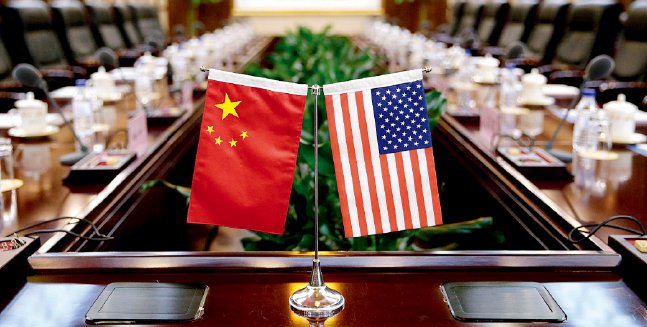
The Outlook for the Renminbi
The renminbi exchange rate posted an extended decline over 2018 amid an economic downturn in China and Sino-US trade friction. The offshore renminbi fell from 6.2566 to the dollar in March to 6.9803 at the end of October,flirting with the sensitive level of seven to the dollar. However,the trend has since changed direction thanks to the easing of Sino-US trade friction following the G20 meeting at the end of last year. The renminbi exchange rate has stabilized,and has even made some gains. Will the currency continue rising in 2019 or will it resume its decline? What are the factors that will most affect the renminbi's exchange rate?
The Sino-US trade spat is one of the great sources of risk for China and the global economy. China's exports declined in November and December compared with a year earlier. Foreign direct investment slumped 27.6% in November though FDI posted solid gains in December. This is largely related to the trade friction and its impact on China's economy. If the friction worsens,there will be more downturns in exports and foreign capital inflows. This in turn will result in increased depreciation pressure on the renminbi.
The good news is that the Sino-US trade tension has eased. The US ¨C like China -- has suffered from the trade spat and is looking for a way out of the impasse. The two sides conducted vice-ministerial-level talks in early January and more talks were held in February. If an agreement can be reached in the near future,downward pressure on the renminbi will abate,and that would make a fall through the key level of seven to the dollar highly unlikely.
The renminbi exchange rate will also reflect the state of the US economy and the market trend for the dollar. There is a strong possibility that the US economy will pass its cyclical peak and then slow down in 2019,as the stimulative effects of tax reform wear off. Additionally,long term structural problems cast a shadow over US economic growth,while political risks have been rising since the mid-term elections and the Federal Reserve continues on a path of monetary tightening.
The possible economic slowdown and the increased volatility in the US financial markets could lead to fewer interest rate increases by the Federal Reserve,and that would put downward pressure on the dollar. This would be a favorable development for emerging market economies. A weaker dollar would provide China more room to employ policies that could support the renminbi.
Recent differences between monetary policies of China and the US are also worth noting. Since late last year China's central bank has implemented a number of measures in response to the downward pressure on the domestic economy. For example,it has included loans for small firms with a credit line of less than 10 million yuan in its cuts in targeted reserve requirements. Previously the limit was 5 million yuan. This is an expansion of preferential policies for smaller enterprises.
China has also made use of tools such as the targeted medium-term lending facility (TMLF) and targeted cuts in the reserve requirement ratio (RRR). Furthermore,it announced a comprehensive RRR cut on January 4,2019. In contrast,the US Federal Reserve is still holding to its policy of further interest rate rises,though the pace of these increases may ease. The Fed sees domestic economic fundamentals as strong enough to continue on its path of returning interest rates to neutral levels. The divergent monetary policies are likely to continue through 2019,and that could mean short-term fluctuations for the renminbi as a result.
The renminbi exchange rate is greatly influenced by China's economic fundamentals,and that was on full display in 2018 amid internal and external risks that exceeded expectations. Various unfavorable factors combined to bring increased downward pressure on the Chinese economy. Market confidence was shaken and short-term bearish sentiment was prevalent. Against this background,stabilizing economic growth became the top priority for China's leaders in 2019. At the Central Economic Work Conference at the end of last year there was a call for a policy of "six stabilities" - namely stabilizing employment,finance,foreign trade,foreign investment,domestic investment and market expectations. The change in policy tone and the announcement of policy support measures should alleviate market concerns and help China avoid a sharp slippage in the economy. The effectiveness of these measures will be critical to the renminbi exchange rate in 2019.
For these pro-growth efforts to take effect,it is anticipated that China will continue to push ahead with its economic reform and opening up effort. On one hand,China would further open up its market and gradually put in place measures such as import expansion policies,increased market access for foreign capital,and the opening up of the finance and service sectors. On the other hand,China would accelerate economic structural reforms,as emphasized at the Central Economic Working Conference. Reform of the private economy,the capital market and the rural land system may give impetus to economic growth. If all these measures are put in place,market confidence will be boosted,and then the renminbi will put in a positive performance.
.
The author is vice president and chief economist of Jingdong Digital Science and Technology





